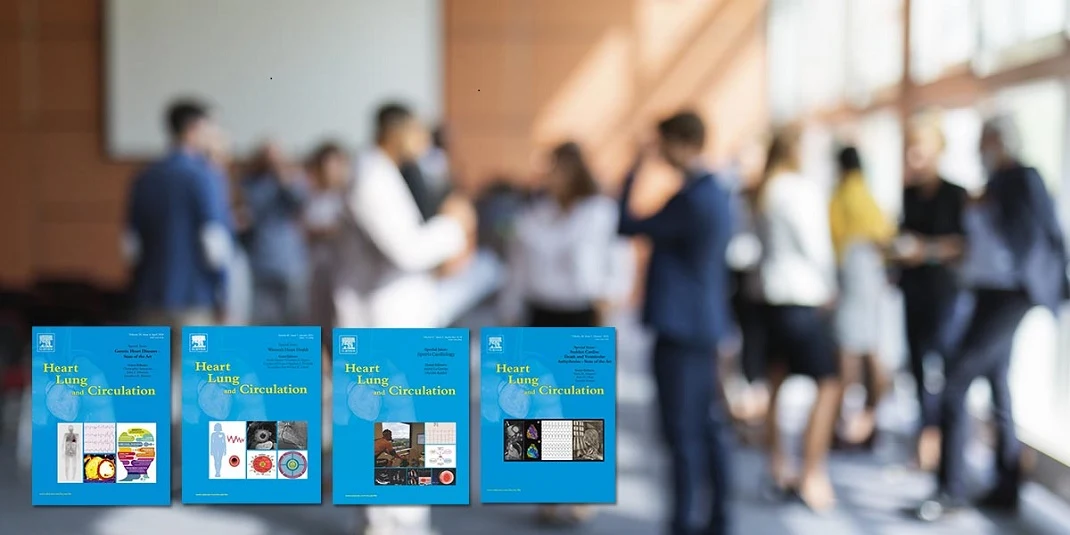How to use special issues to raise the profile of your journal content
September 16, 2021

Featuring special issue topics at meetings has sparked more members to read, write and review for the journal of the Cardiac Society of Australia and New Zealand (CSANZ)
A challenge facing many societies is how to get members to read and fully embrace journal content, especially members who work outside of research and are not necessarily used to engaging with journal material on a regular basis.
There are a few tried and tested ways to achieve this, such as sending electronic alerts of a journal’s table of content to prompt the recipient to read the full-text articles; promoting journal content through society marketing and social media channels; and, of course, distributing print journal issues and online access entitlements. But as the saying goes, “You can lead a horse to water, but you can't make it drink.”
To meet this challenge, one society based in Australia has recently had success in increasing interest in journal content by incorporating the content of their journal special issues into their annual conference.
In recent years, Heart, Lung and Circulationhas published a number of special issues featuring research and reviews in various topical and emerging areas in cardiology. Typically, these have been guest edited by leading Australian researchers, including an associate editor of the journal who attend the annual conference of the co-owners of the journal: the Cardiac Society of Australia and New Zealand (CSANZ).
Conference sessions focus on special issue topics
To help promote this content and engage with members, the Heart, Lung and Circulation editorial team approached the CSANZ conference chair in 2018 and proposed a breakfast session focused on the research recently published in a special issue on Sports Cardiology, a new sub-specialty in the field.
According to Associate Professor Andre La Gerche of the Baker Heart and Diabetes Institute in Melbourne, who convened the special edition and breakfast session: “This is a niche topic in cardiology that always generates interest. We do not get much exposure to young athletes in clinical hospital training, and the athlete’s care is unique. The special issue received international interest and the morning session was extremely popular.”
While the journal had featured in the conference program before (via early-career researcher publication and peer review workshops), a dedicated content-focused session was new ground. The guest editor and a high profile author shared their insights and interesting case studies related to some of the published articles. Breakfast was provided, and the turnout was surprisingly good for an early morning session. There were plenty of questions from those in the audience, and the feedback on the session was very positive.
Articles in the special issue went on to receive approximately 75% more downloads than the average article published in the journal.
Following its success, the exercise was repeated in 2019. This time the session featured two special issues: one on Sudden Cardiac Death and Ventricular Arrhythmias and one on Echocardiography. Again, the session, this time held on the final morning of the conference, was exceptionally well attended (standing room only), and the issues went on to receive strong levels of downloads and citations.
Virtual meetings also get results
Despite intentions to repeat the sessions in 2020 and 2021, the advent of COVID-19 curtailed plans for face-to-face sessions. However, virtual sessions featuring the most recent special issues were held as part of the CSANZ’s December 2020 hybrid and August 2021 virtual society conferences. These included recent special issues on Genetic Heart Diseases, Women’s Heart Health and a forthcoming issue on Vascular Ageing.
Average downloads per article for the two published issues are already twice as high as those in regular issues.
An additional initiative introduced for the August 2021 conference was the launch of a call for papers for a future special issue on Environment, Climate and Cardiovascular Health at a conference session focusing on this area. The topical issue, due for publication in 2022, will examine the impact of environment and climate, pollution and extreme weather events on cardiovascular health, as well as potential solutions to current and future cardiovascular health impacts.
“An added bonus has been an increase in members writing and reviewing articles …”
These initiatives have provided a multitude of benefits. The sessions have provided a valuable platform to highlight journal content to society members (leading to increased journal usage). What’s more, they have helped to increase the number of members interested in both reviewing and writing articles for the journal, and expressing interest in acting as Special Issue Guest Editors. When combined with increasing exposure and interest in CSANZ’s annual conference, the results have been positive all round.
According to Prof Robert Denniss of the University of Sydney, Editor-in-Chief of Heart, Lung and Circulation:
The additional interest generated by this initiative of our special topical issues has been very gratifying. An added bonus has been an increase in the number of CSANZ members becoming involved in writing or reviewing articles for the journal.